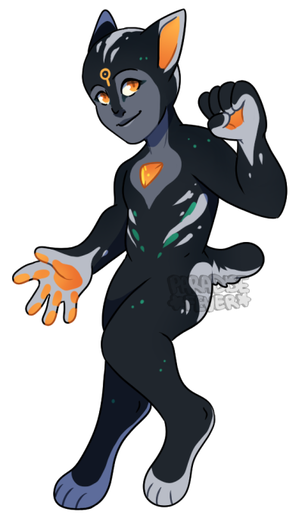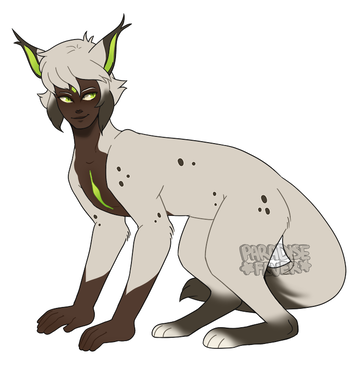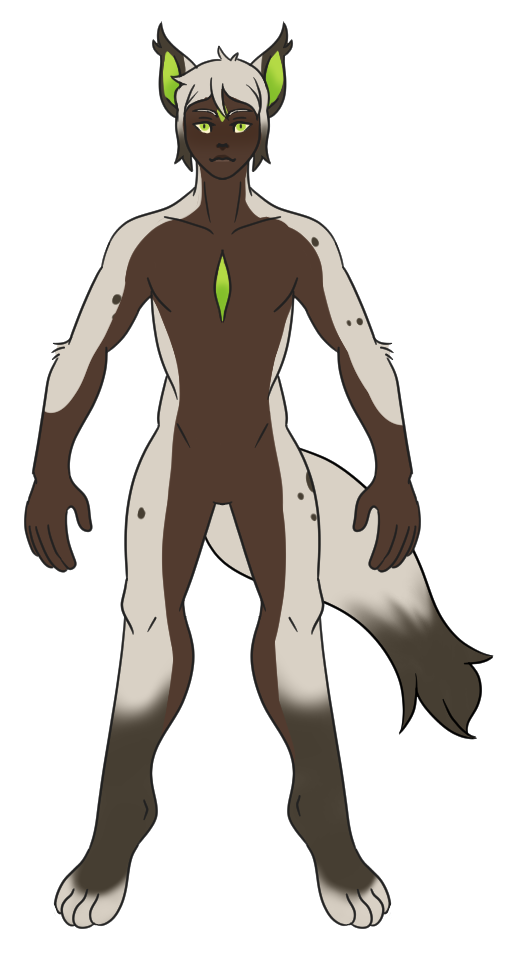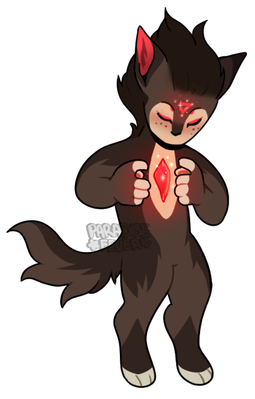Species
Haiwari
Visual Trait IndexSummary

Soul Essence Location: Eyes, Paw pads, Ears, Ajna, Heart, blood.
Bone/Teeth/Nail colour: White, or off-white.
Required Traits: Eyes, Tails, Ears, Texture, Ajna, Heart
Average Height: 4ft - 7ft
Diet: Haiwari are omnivores, with a preference for meat and seafood. Their diet requires a high protein intake to maintain their physical prowess.
Location:Almost anywhere. Their origins may have been within the Higara, Kukoltu, and A'zul region.
✦ General Info ✦
General Info

(Hi-wah-ree)
The Haiwari people can be found throughout the islands. Their key physical characteristics include animal ears, tails, slit eyes, sharp fangs, digitigrade legs, and a fur covering.
Elder and older generations may exhibit more pronounced animalistic features such as whiskers, paws, and denser fur growth.
Legends also depict them as "were-people" capable of transforming into large creatures. This transformation harnesses aetheric energy from their environment and bloodline. The full moon and locations with high concentrations of energy are known to trigger these occurrences.
In their "were" state, instinct and strong emotions tend to take over their actions. Only experienced and trained individuals can control their mental state in their larger form. Elders, monks, and prodigies are often those who can fully harness this power with control.
It is an age-old story, however, with several dark implications of war and political propaganda. Many Haiwari in the present day have chosen to move beyond this legacy. Very few have upheld the practices and beliefs of their ancestors.
Self-aware and highly intelligent, they possess an incredible sense of smell, hearing, and physical prowess compared to a standard human. Some mistake these feats for precognition, as most Haiwari can effectively dodge incoming attacks and violent storms due to their acute senses.
Haiwari are often born with patterns on their foreheads and a hard, crystal-like organ in their chest. Many believe this organ is the mark of the gods, granting them strength, beauty, and resilience to aetheric energy.
Do not refer to a Haiwari as a beast or animal. They take great offense to such labels.
✦ Anatomy ✦
Anatomy

Haiwari possess a captivating blend of human and animal features. Their hands mimic human anatomy with four fingers and a thumb, while their digitigrade legs boast paw-like features and four toes (sometimes with an extra for a little surprise). Both hands and feet can be equipped with retractable claws, adding a touch of ferocity. Their faces further blur the line between human and animal, showcasing a unique blend of traits. The nose, in particular, takes inspiration from rabbits or felines, while retaining a distinctly human bridge.
Beyond their captivating form, these humanoids possess some truly unique traits. Fangs on their teeth grant them the ability to tear through food with ease. A crystal organ, known as the Heart that's nestled on their chest, holds a special significance, harboring a powerful energy source. During pre-adolescence, a unique marking on their forehead, known as the ajna, awakens.
Their skin comes in a vast array of colors, contrasting distinctly with fur that can be any length and styled to their preference. Some areas even showcase a captivating blend of both fur and exposed skin. Hair on their head follows suit, allowing for endless styling options. A final unique feature is their collapsible collarbone, similar to cats and Drakonian creatures. This grants them the incredible flexibility to move on all fours, adding another layer of adaptability to their repertoire.
Skin and Fur ratio:
Legend tells of the Haiwari ancestors who donned the fur of slain beasts, absorbing the creature's essence both spiritually and physically. This is believed to be the origin of their furred bodies.
Haiwari possess a unique ratio of fur to exposed skin. Here's a simple guide outlining the acceptable range:



✦ Communication ✦
Communication

Haiwari are multilingual. They can speak the common tongue fluently and possess an impressive ability to mimic a wide range of animal sounds, including meows, grunts, howls, roars, purrs, and chatters.
These animal vocalizations serve several purposes within Haiwari society:
- Silent Communication: Haiwari can use these sounds for subtle communication amongst themselves, conveying messages without actually speaking.
- Hunting: Mimicking prey sounds can be a valuable tool during hunts to lure unsuspecting animals.
- Emphasis: Some Haiwari might intentionally or accidentally mix human speech with animal sounds to add emphasis or emotional weight to their words.
Haiwari Slang:
Interestingly, "Nya" is a common slang term used by Haiwari, often added to the end of sentences.
✦ The Ajna and Heart ✦
The Ajna & Heart

The Third Eye
A distinct marking graces the forehead of every Haiwari. It develops slowly over time, maturing around 6-8 years of age. Though its true name is lost to history, it's commonly referred to as the "Third Eye." This marking is believed to be linked to a Haiwari's aetheric flow, working in conjunction with a similar organ called the "Heart" located on their chest.
Once revealed, the Third Eye becomes a permanent and unique identifier for each Haiwari. Its color and pattern vary from individual to individual.
Ancestral Protection
Shortly after birth, an elder or parent of the tribe performs a sacred ritual. The newborn's forehead is smeared with colored clay, mud, or herbs. This temporary talisman, applied daily until the Third Eye reveals itself, is believed to offer protection from malevolent forces and encourage the marking's growth.
The Heart
Located in the center of the chest, the Heart is a hard, stone-like organ that regulates a Haiwari's aetheric energy. It manifests as a single, solid shape, visible within a few hours after birth. Unlike the Third Eye, the Heart can be retracted into the body. A cracked or broken Heart has severe consequences for a Haiwari's health and development.
Expressions of Intimacy
As a sign of deep affection, Haiwari will press their foreheads together. If both partners are Haiwari, they might even touch their exposed Hearts, creating a profound emotional connection.
✦ Life Cycle ✦
Life cycle


Birth:
---
Death:
---
